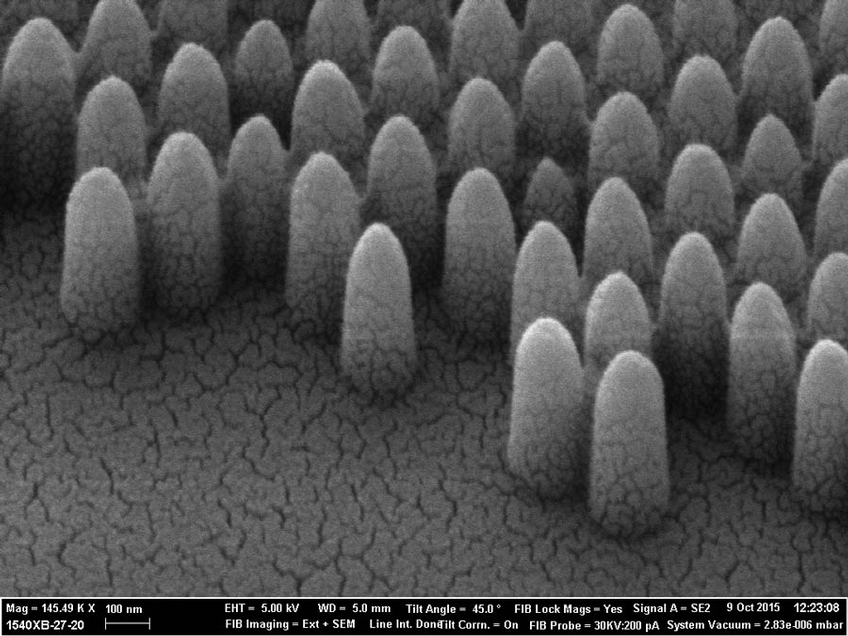
Envelope
Moth-eye smart windows cut cleaning costs AND heating bills
January 21, 2016 - A new type of smart window developed by University College London (UCL) with support from the U.K.’s Engineering and Physical Sciences Research Council (EPSRC) could cut window-cleaning costs in tall buildings while reducing heating bills.
January 22, 2016 By Anthony Capkun

Prototype samples apparently confirm the glass can deliver three key benefits:
• Energy-saving: The glass is coated with a very thin (5-10nm) film of vanadium dioxide which, during cold periods, stops thermal radiation escaping, thereby preventing heat loss; during hot periods, it prevents infrared radiation from the sun entering the building.
PHOTO: A scanning electron microscope photograph shows the pyramid-like nanostructures engraved onto glass. At 200nm they are 100 times smaller than a human hair. Controlling the surface morphology at the nanoscale allows scientists to tailor how the glass interacts with liquids and light with high precision.
• Anti-glare: The design of the nanostructures gives the windows the same anti-reflective properties found in the eyes of moths and other creatures that have evolved to hide from predators. It cuts the amount of light reflected internally in a room to less than 5%. This reduction in glare should, in theory, boost occupant comfort.
• Self-cleaning: The window is “ultra-resistant” to water, so rain hitting the outside forms spherical droplets that roll easily over the surface, picking up dirt, dust and other contaminants and carrying them away. This is due to the pencil-like, conical design of nanostructures engraved onto the glass, trapping air and ensuring only a tiny amount of water comes into contact with the surface.
This is the first time that a nanostructure has been combined with a thermochromic coating, says the UCL team. The bio-inspired nanostructure amplifies the thermochromic properties of the coating and the net result is a self-cleaning, highly performing smart window, said Dr. Ioannis Papakonstantinou, project leader of UCL.
The UCL team calculates the windows could result in a reduction in heating bills of up to 40%, with the precise amount in any particular case depending on the exact latitude of the building where they are incorporated.
“We also hope to develop a smart film that incorporates our nanostructures and can easily be added to conventional domestic, office, factory and other windows on a DIY basis to deliver the triple benefit of lower energy use, less light reflection and self-cleaning, without significantly affecting aesthetics,” added Papakonstantinou.
Print this page